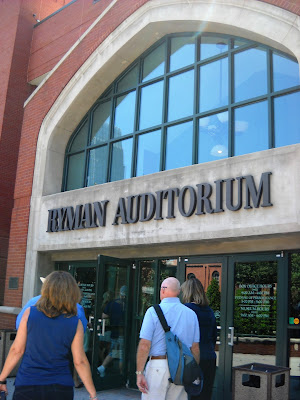A bit of history about the hotel I am staying in... The Millennium Maxwell House Hotel. The story of Maxwell House Coffee begins in Kentucky in 1873 when Joel Cheek, a traveling salesman for a wholesale grocery firm was asked by a customer what the best coffee that he sold was. In rural areas in the 1870's people bought their coffee green and roasted it at home. He naturally recommended the most expensive one, though he knew nothing about the differing qualities of coffee.
Whether bothered by his conscience or simply out of curiosity, that night he roasted some of each type of coffee that he sold and sampled them side by side. He decided that actually one of the cheaper brands had the best flavor. The next day he returned to the grocer that had asked him the question and explained why he would be shipping him the cheaper brand.
Many years passed before he would move to Nashville in 1884 and meet Roger Nolley Smith, a British coffee broker who could reportedly tell the origin of a coffee simply by smelling the green beans. The two became fast friends bound by their passion for coffee. This friendship would be the beginning of Maxwell House Coffee though it would be several more years before either of them knew it.
So there.
Had a quick drive through of music row where all the music label offices are and then on to a stop at the Ryman Auditorium. The auditorium first opened as the Union Gospel Tabernacle in 1892. It was built by Thomas Ryman (1843–1904), a riverboat captain and Nashville businessman who owned several saloons. Ryman conceived of the auditorium as a tabernacle for the influential revivalist Samuel Porter Jones. After Ryman's death, the Tabernacle was renamed Ryman Auditorium in his honor.
It was used for Grand Ole Opry broadcasts from 1943 until 1974, when the Opry built a larger venue just outside Nashville at the Opryland USA theme park. (In an effort to maintain continuity with the Opry's storied past, a large circle was cut from the floor of the Ryman stage and inlaid into the center of the new Opry stage.)
The Ryman then sat mostly vacant and fell into disrepair until 1992 when Emmylou Harris and her band, the Nash Ramblers, performed a series of concerts there. The Harris concerts renewed interest in restoring the Ryman, and it was reopened as an intimate performance venue and museum in 1994. Audiences at the Ryman find themselves sitting in pews, the 1994 renovation notwithstanding. The seating is a reminder of the auditorium's origins as a house of worship, hence giving it the nickname "The Mother Church of Country Music".
Then on to the Country Music Hall of Fame and Museum functions as a local history museum and as an international arts organization, the CMF. On May 17, 2001, the CMF held the grand opening of its new $37 million facility ten blocks away in downtown Nashville. Inside, the museum presents its collection to illustrate country music's story as told through the turns of two centuries. Included are historic country video clips and recorded music, as well as a regular menu of live performances
The original Country Music Hall of Fame and Museum opened on Music Row in 1967. Operations of the museum came to include educational programs, the CMF Press and CMF Records, the Country Music Foundation Library (1968), and the historic sites RCA Studio B (1977) and Hatch Show Print (1986). The Music Row location of the Country Music Hall of Fame and Museum was closed December 31, 2000. The building was later razed and a private parking lot for employees of music licensing firm BMI now occupies the site.
So there, happy parking BMI employees!
Source - Wikipedia





Where Are you going next Marius? I live about 30 minutes from Lynchburg and 2 hours from Chattanooga. I am in Huntsville Alabama! South of Chattanooga before getting to Birmingham. Drop in I got a spare room (with couch, no bed) also we have another MS Alumni coming thru on Tuesday on her way to Texas!
ReplyDelete